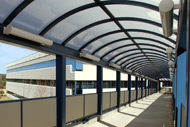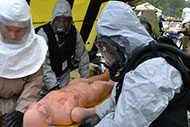Each fall, the American Hospital Association publishes its Environmental Scan, a succinct forecast of the major trends that will impact health care organizations in the coming year. The report uses a variety of research data points to reflect on issues underlying trends in such areas as consumer habits, technology, public policy and more.
Much of what’s in this document speaks directly to senior leadership at member hospitals, but there are also many great takeaways for those who design, build and maintain America’s hospitals.
For example, you can find important observations about what’s shaping the way patients are and will be receiving their care — from traditional health care spaces to retail locations. The report also highlights important facts about challenges the health care community faces in behavioral health. For example, the report notes that more than half of U.S. counties — all rural — have no practicing mental health clinicians.
You’ll also learn about the growing financial toll violence is taking on the health care system and the communities hospitals serve. For instance, the Centers for Disease Control and Prevention estimates the direct cost of violence for nonfatal injuries totals $5.6 billion per year, with indirect costs totaling nearly $65 billion. The scan also notes that workers in health care and social assistance settings are five times more likely to be victims of nonfatal assaults or violent acts than workers in all other occupations.
In another area that has ramifications for patient and staff safety, the Environmental Scan notes that nearly 20,000 deaths occurred in 2014 due to overdoses of prescription opioids. That same year, more than 10 million people reported using prescription opioids for non-medical reasons.
Finally, in the science and technology section, you’ll find interesting facts about the rapid rise in the use of video technology to support telehealth programs.
Data like these underscore the important role and challenges that facilities designers and managers face in working to create and maintain environments that help to support a more responsive, cost-effective and efficient care delivery system — and one that is attentive to America’s most distressed and vulnerable patients.
For deeper perspectives on what’s in the Environmental Scan, the following resources also offer valuable insights:





